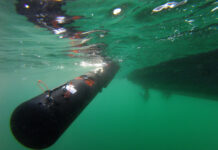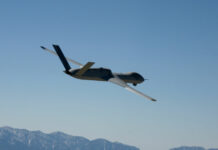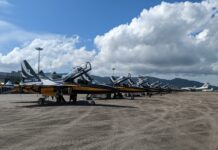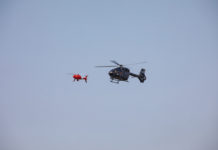The arrival of uncrewed systems into force structures and operations is providing navies with an opportunity to harness the capabilities these systems can add to those of crewed platforms. This new force package is combining to generate force multiplying operational effects. However, there are still challenges to be worked through, including in both conceptual and technological terms.
Maritime uncrewed systems (MUS) are increasingly present in Western navies’ inventories and operations in all three primary maritime domains: air, with uncrewed aerial vehicles (UAVs); surface, with uncrewed surface vessels (USVs); and sub-surface, with uncrewed underwater vehicles (UUVs). There are two types of UUV: remotely operated vehicles (ROVs), which are controlled by a human operator onboard the ROV’s host platform; and autonomous underwater vehicles (AUVs), which operate independently.
An ROV is, in some senses, a very simplistic example of what is known today as ‘manned/unmanned teaming’, or MUM-T, with a human operator controlling the system in a manner, and perhaps in an environment, designed to exploit what can be done without a human operator onboard.
In practice, MUM-T concepts, capabilities, and operations are somewhat more complex than that. In a 2020 paper published in NATO’s Joint Air Power Competence Centre’s (JAPCC’s) monthly journal, Italian Army lieutenant colonel Livio Rossetti defined MUM-T as “a relatively new technology which aims to synchronize the employment of the actors involved”. “The innovative concept of action could revolutionize the planning and conduct of warfare in the future,” Lt Col Rossetti added.
In maritime terms, MUM-T can perhaps be considered in two ways. First, it encompasses the integration of crewed and uncrewed platforms at a tactical level, for example a maritime patrol aircraft (MPA) operating in partnership with a UAV to augment a navy’s sustained, wide-area surveillance capacity. Second, it can also include the development of a crewed platform – most likely a surface ship – as a host asset deploying uncrewed assets exclusively (whether they be AUVs, USVs, or UUVs).

Credit: US Navy
While navies are actively looking to deploy and integrate uncrewed capabilities across all three primary domains, it is in the air where developments have perhaps proceeded more quickly. Moreover, while navies continue to work out the optimum role and use for the range of uncrewed systems of different capabilities they aim to develop in each domain, initial focus has fallen on tasks where such uncrewed capabilities can – in the first instance, at least – have the most prominent impact. Here, Western navies have been concentrating on using uncrewed capabilities to undertake what are termed the ‘3-D’, or ‘dull, dirty, and dangerous’ tasks, for which deploying complex, expensive, crewed platforms for extended periods may not be an operationally efficient use of resource, particularly when there may be risk to the platform and thus to the lives of its crew.
When combined with the fact that the increasing operational challenge at sea for Western navies posed by the return of state-based competition and conflict mandates greater coverage across what are large expanses of both littoral and blue water regions to build maritime domain awareness (MDA), the focus on ‘3-D’ tasking means that most such navies are prioritising the development of surveillance capability from a technology perspective, and surveillance capacity from an operational perspective.
The Russo-Ukraine war, which erupted in February 2022, has featured prominent maritime campaigns in both the Black and Baltic seas. In the Black Sea, this included extensive use of traditional operations like mine warfare, and emerging technologies like USV attacks, both conducted to generate sea denial. In the Baltic Sea, this included the apparent use of ‘grey zone’ hybrid warfare operations, including targeting critical undersea infrastructure. The consequences of these maritime campaigns have seen NATO build greater at-sea presence from the High North to the Eastern Mediterranean, in order to enhance maritime surveillance and broader MDA. It is in this surveillance task where initial, operational-level progress in MUM-T can be seen most clearly. Moreover, it is also in the air where such maritime MUM-T is most visible.
Patrol profile
The US Navy’s (USN’s) Boeing P-8A Poseidon MPA is arguably the premier air-based maritime surveillance platform. The USN’s operational requirement is for an inventory of 128 P-8As: 118 have been delivered to date, and 12 operational squadrons have been established (plus two in reserve); four squadrons are forward-deployed around the world, meeting the operational need to generate 28 aircraft deployed at all times, Captain Clay Waddill, the USN’s Plans, Training, and Requirements Branch Head for its Maritime Patrol and Reconnaissance Force under the Commander Patrol and Reconnaissance Group (CPRG), told the SAE Media Group Maritime Reconnaissance and Surveillance Technology (MRST) conference in London in late January 2024.
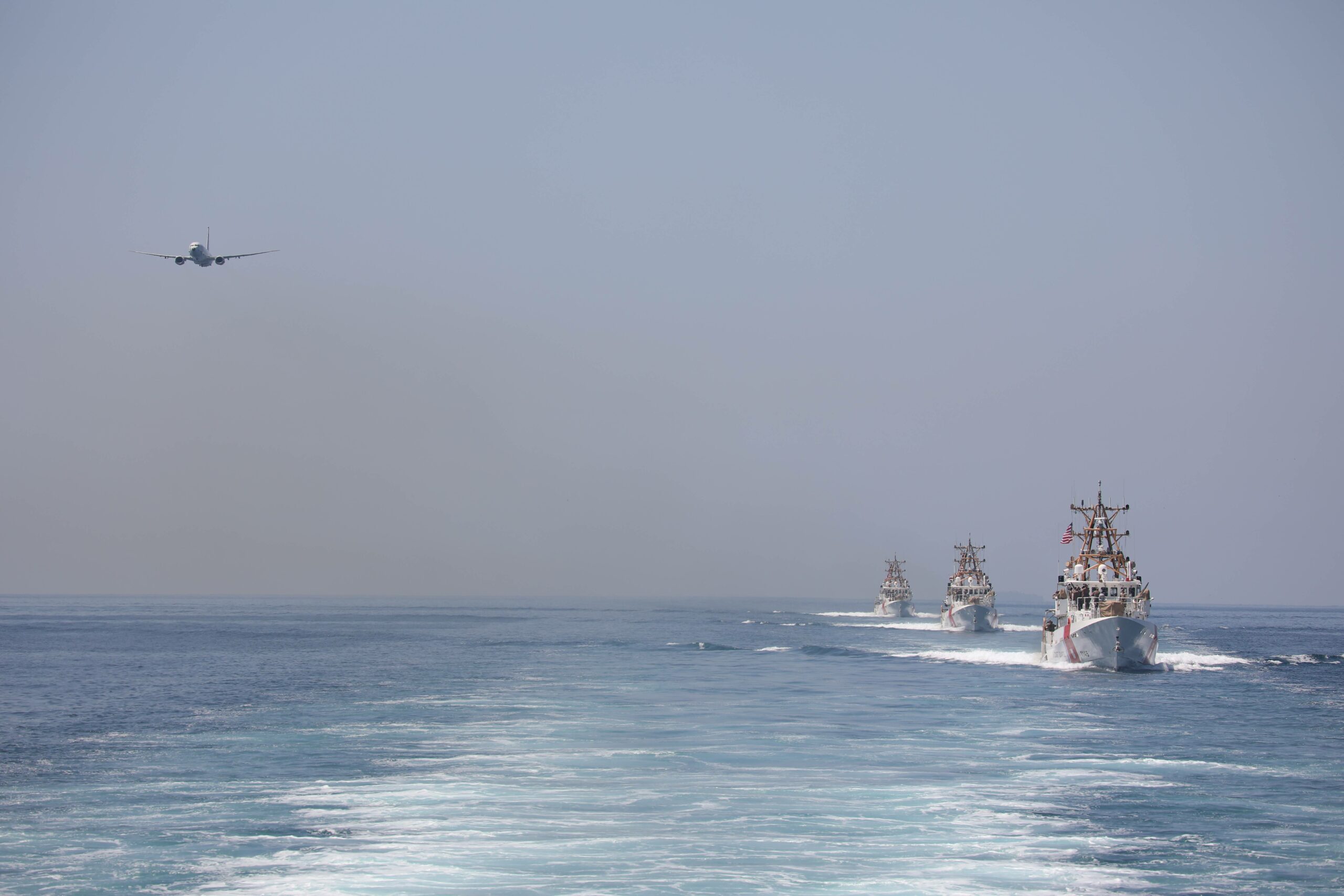
Credit: US Coast Guard
According to the USN, CPRG is the fleet sponsor for the navy’s MUM-T integration concept work. Having the P-8A forward deployed “gives us that 24/7 rapid responsiveness”, said Capt Waddill. Pairing it with uncrewed platforms enhances the capabilities and effects it can bring – either when responding rapidly in tandem, or with the uncrewed platform providing a baseline of surveillance presence against which the P-8A can focus on issues of interest as, when, and where they arise.
The USN forward deploys P-8A squadrons on rotation to Sigonella Naval Air Station, Sicily, Italy. Notionally, 11 USN P-8As are deployed there. The P-8A also has a wider, multinational footprint across the region. The Norwegian and UK air forces operate P-8As across the Euro-Atlantic theatre (with Norway having five aircraft, and the UK nine). Germany will be the next European-based P-8A operator, and in late 2023 upped its planned buy from five to eight airframes. Canada is planning to buy 14 P-8As, and is likely to deploy aircraft to the Euro-Atlantic theatre regularly – just as it does with its in-service Lockheed Martin CP-140 Aurora MPA. In a presentation given by the Italian Air Force at the MRST conference, the P-8A was listed as a possible option for Italy’s own future MPA platform.
Thus, the P-8A Euro-Atlantic presence – which is already significant – seems set to keep growing. This continuing expansion in NATO’s collective MPA ‘ORBAT’ remains timely, too. Russian naval activity from NATO’s northern flank in the High North to its southern flank in the eastern Mediterranean and Black Sea region remains significant, despite Russia’s relatively slow offensive progress ashore in the war; not to mention the sustained attacks its Black Sea Fleet is suffering from Ukrainian uncrewed vehicles, within what appears to be an effective sea denial campaign.
Across the Euro-Atlantic maritime theatre, Russian naval activity is particularly prevalent in the underwater domain. This is where the P-8A’s capabilities arguably are needing to be brought to bear most significantly. While being a highly capable MPA when it comes to intelligence, surveillance, and reconnaissance (ISR), its capabilities are required particularly in terms of anti-submarine warfare (ASW). Thus, the P-8A’s operational effects can be enabled, and in fact multiplied, by partnering it with UAV capabilities in particular, with the UAVs taking on some of the burden for wide-area maritime surveillance: in this context, the P-8A is a primary example of the requirement for, and benefits of, MUM-T.
Captain Bryan Hager – Commodore of the USN’s Sigonella-based Commander Task Force 67 (CTF-67) and Commander, Fleet Air Sigonella – underscored this point to the MRST conference audience. CTF-67 delivers the USN’s regional maritime patrol presence, with the P-8As based in Sigonella but with a need to cover the Arctic down to the Gulf of Guinea, “We can’t do it with just aircraft,” said Capt Hager. With the Arctic/Gulf of Guinea coverage spread being just one instance of the vast maritime areas the USN (for example) from an MDA perspective, must cover interoperability between systems, he explained. A particular partner the USN is preparing to pair with the P-8A is the Northrop Grumman MQ-4C Triton high-altitude/long-endurance (HALE) UAV.

Credit: US Marine Corps
According to the USN, “The MQ-4C Triton is an autonomously operated system that provides a persistent maritime ISR capability using multiple maritime sensors.” While providing such ISR persistence as its primary function, the data it gleans is fed back to a ground control station crew numbering five personnel – an air vehicle operator, tactical co-ordinator, signals intelligence (SIGINT) co-ordinator, and mission payload operators (two). Triton operates as a remotely piloted air system (RPAS).
“[Triton] was originally procured by the Navy to take over that ISR capability, with electro-optical/infra-red [EO/IR] imagery and radar data, to alleviate that task for the manned aircrew, so [the P-8A] can focus on the things that … [it’s] really there for, which is ASW,” said Capt Waddill. “Triton will be that first line of defence,” he added, noting that the MQ-4C will be forward based around the world in three deployable locations – which are known as ‘orbits’. The first ‘orbit’, operated by Squadron VUP 19, has been established in Guam.
The MQ-4C system capabilities that are already being demonstrated are showing great potential, said Capt Waddill. Such capabilities include sustained time on station, for example. Triton can bring maritime surveillance capability for up to 18 hours at a time, Capt Hager explained, with the UAV operating effectively as an “unblinking eye” that provides persistence not even a P-8A can generate. The MQ-4C is now a central, integrated element of the USN’s plan for conducting long-endurance air-based maritime surveillance missions, demonstrating the importance of the MUM-T approach.
Yet Triton’s focus on surveillance capability underlines the requirement for its MUM-T integration with the P-8A in particular. “The critical part of this is Triton can’t do anything other than look. What is the other piece of this? This is where MUM-T comes in,” said Capt Hager.
Here, he explained, the P-8A brings responsiveness and agility, the ability to operate at low level if needed, capacity to capture high-resolution imagery, and the ability to deliver weapons. “So, whenever we get that cue from Triton, we can launch the P-8A out to be able to go and do further prosecution: that’s how that MUM-T works.”
Data from both aircraft is fused at a ground control station. A future line of capability inquiry for the USN is how to get what are increasing amounts of data off both aircraft more quickly, so the data can be filtered, synchronised, and turned into information that is ready to be exploited.
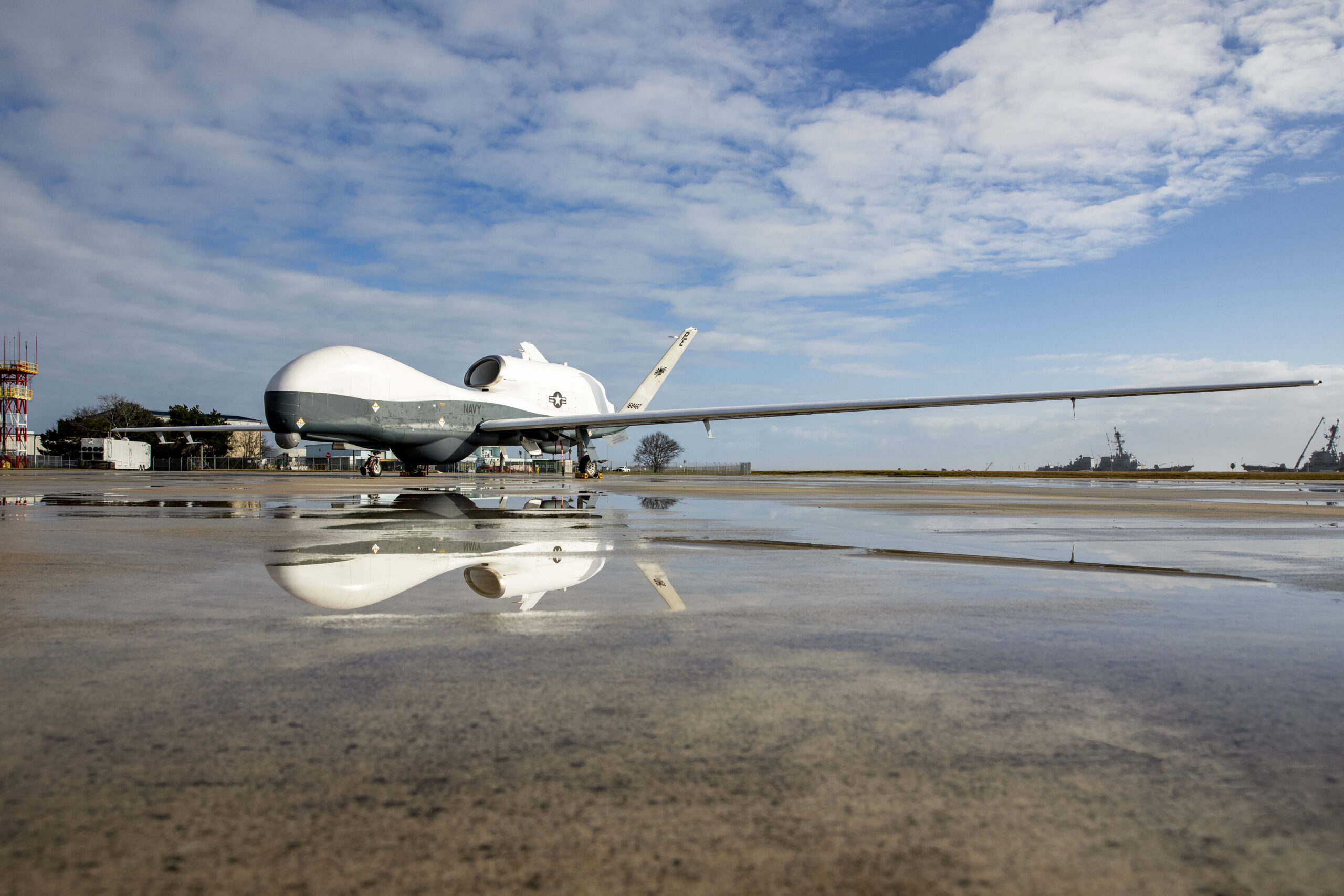
Credit: US Navy
Triton was procured to replace the capability provided by the Lockheed Martin EP-3E Aries SIGINT aircraft. The MQ-4C programme passed through its initial operating capability (IOC) milestone in September 2023, and all aircraft will be delivered by 2030, said Capt Waddill. As well as providing broad surveillance capability, SIGINT and optronic/IR capabilities will be added to the aircraft in a series of upgrades planned for implementation in the 2024-27 timeframe, Capt Waddill added. Such capability upgrades will help improve the aircraft’s ISR coverage.
As the USN develops its Triton MQ-4C capability, just as with the P-8A this capability will always be forward deployed. In February 2024, the second Triton vehicle was delivered to Sigonella NAS, building capability in the Euro-Atlantic theatre in advance of the USN completing the development of procedures and processes to enable operations to take place within the theatre. Basing the Euro-Atlantic Tritons at Sigonella underlines the potential to develop a high level of integrated MUM-T operations, with Triton and Poseidon operating from the same facility.
In 2025, the USN will set up its second Triton Unmanned Patrol Squadron (VUP), VUP 11. This squadron will operate one of the three ‘orbits’: however, Capt Waddill explained, it is not yet determined which one. VUP 19 will operate the other two.
The second and third ‘orbits’ themselves are also set to be established by 2025, and will cover areas including the US Fifth Fleet’s Middle East area of operations (AOO) as well as the Euro-Atlantic theatre. A Triton ‘orbit’ includes four aircraft, and is designed to provide capacity to maintain continuous surveillance of the respective AOO.
The MQ-4C operators include P-8A-qualified USN personnel, Capt Hager said. Capt Waddill added that a cycle is developing of personnel moving back and forth between Poseidon and Triton postings. This all underlines the level of MUM-T integration generated across and within the Poseidon/Triton package.
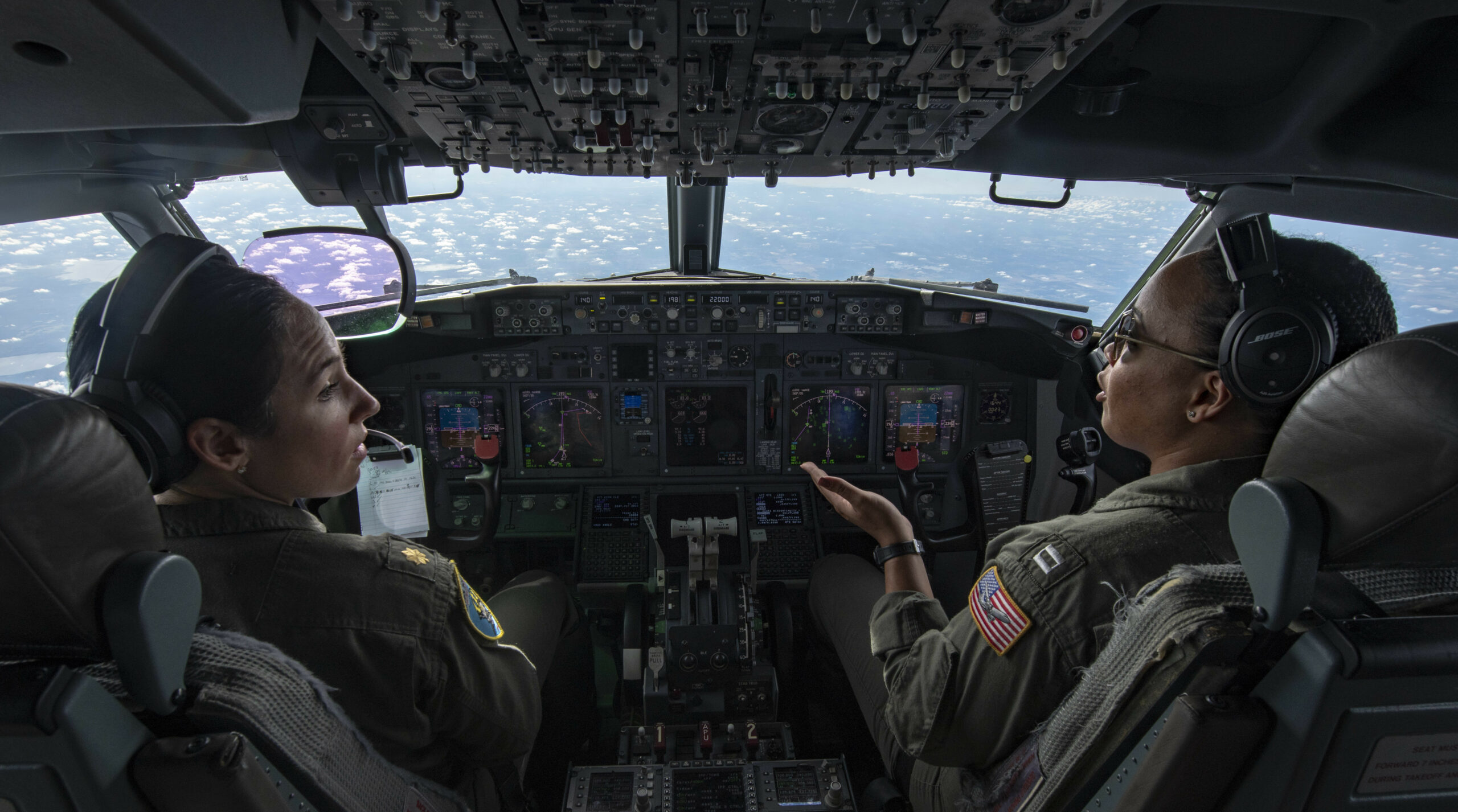
Credit: US Navy
As noted, one challenge the USN is looking at keenly in technology terms is that the P-8A/Triton pairing is generating increased amounts of data. This underlines the need to find a way to offload that data mid-mission more quickly so that decision-makers may exploit it more rapidly, said Capt Hager. Capt Waddill added that a next step in this process is a procedural one, preparing the data in a ‘first pass’ analysis so that it is ready for use and action by the decision makers.
Wider teaming
The USN is not the only navy making progress in delivering MUM-T for air-based maritime surveillance. The French Navy has developed extensive experience of operating its Dassault Atlantique Mk 2 (ATL2) MPA with UAVs, Lieutenant Commander Maxence Combas – an MPA tactical co-ordinator, currently posted to the navy’s Maritime Surveillance and Intervention Patrol centre of excellence (CENTEX PATSIMAR) – told the MRST conference.
The ATL2 aircraft have been integrating with tactical UAVs to conduct ISR and close air support missions, Lt Cdr Combas explained. Here, for each aircraft, the navy has learned how to use such integrated co-operation to exploit respective strengths and mitigate respective weaknesses. Lt Cdr Combas underlined the particular role UAVs play in providing sustained ISR, and in being able to operate in contested environments were air- and surface-based threats to crewed aircraft may be especially prevalent.
A challenge the French Navy is looking to address to further enhance MUM-T is communications connectivity between the two platform types, said Lt Cdr Combas. Such connectivity is something that is being contested ever more acutely in contemporary naval operations.
Author: Dr Lee Willett is an independent writer and analyst on naval, maritime, and wider defence and security issues. Previously, he was Editor of Janes Navy International, senior research fellow in maritime studies at the Royal United Services Institute, London, and Leverhulme research fellow at the Centre for Security Studies, University of Hull.







